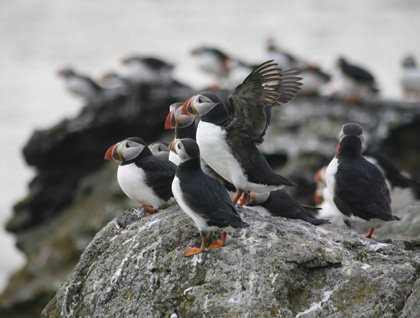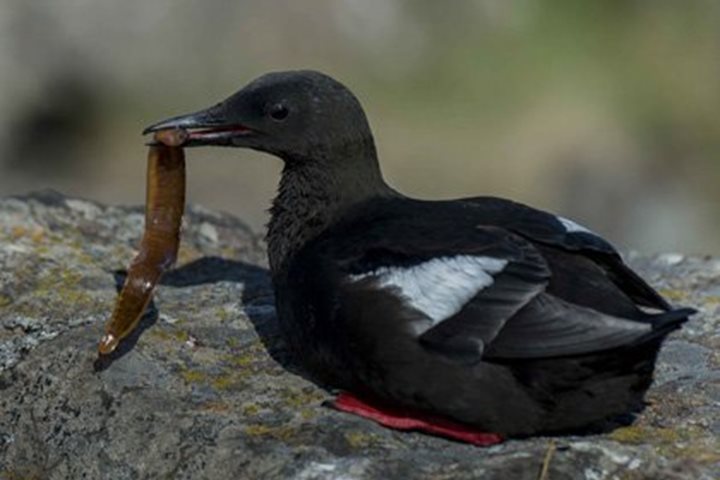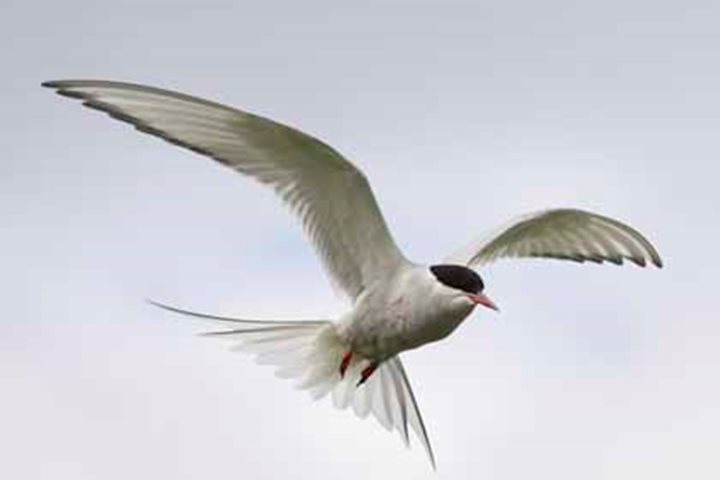A 6:30 a.m. announcement that a pair of humpback whales were just off our bow began our morning as we sailed toward Vigur Island in the West Fjords of Iceland. Slowly cruising through the water, these wonderful animals were feeding. With a backdrop of basaltic cliffs and whirling seabirds, the scene was a splendid photographic opportunity which many guests took advantage of. Our anchor dropped, the first Zodiacs headed to the small floating dock on the small island of Vigur. There we were warmly welcomed by Magnus, one of the sons of the owners of the island, which is now a nature reserve. It had been in the possession of his family for several generations. Fishing, raising sheep , catching puffins, and gathering the down from eider duck nests have been, and still are, the mainstay activities here. Sixty kilos or so of eider down are processed each year. Thousands of puffins, black guillemots, and arctic terns frequent the island which is in addition a veritable rock garden of wild flowers. Our short visit completed, we returned to our ship for a relaxing morning as we continued our explorations of the West Fjords.
During lunch we arrived in Arnarfjordur whose sides are composed of stacked layers of basalt. During the last Ice Age a gigantic glacier rasped and gouged the rock to form this spectacular drowned u-shaped valley, at the head of which is the Dynjandi waterfall. It is aptly named The Thunderer. At 100 metres in height and 60 metres in width at its base, this is an impressive feature. The cascading water has eroded a series of rock basins, comparable to a number of rock steps, one below the other. We slowly made our way to the topmost platform. The thump of the water, the fine spray in the air, the verdant, lush carpet of mosses, the multi-coloured rocks, the grandeur and scale of the place, all combined to mesmerise. From our perch high above the valley floor, the vista was spectacular. Anchored in the fjords’ pond-calm waters our ship was ringed by kayakers.






